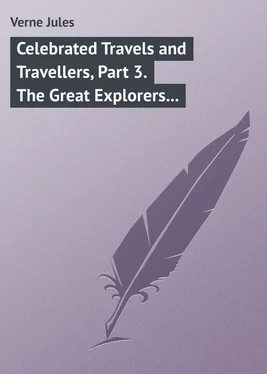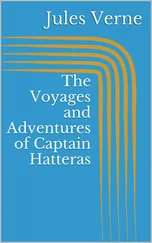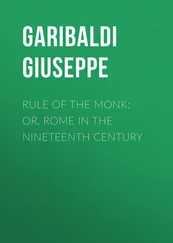Jules Verne - Celebrated Travels and Travellers, Part 3. The Great Explorers of the Nineteenth Century
Здесь есть возможность читать онлайн «Jules Verne - Celebrated Travels and Travellers, Part 3. The Great Explorers of the Nineteenth Century» — ознакомительный отрывок электронной книги совершенно бесплатно, а после прочтения отрывка купить полную версию. В некоторых случаях можно слушать аудио, скачать через торрент в формате fb2 и присутствует краткое содержание. Жанр: foreign_language, foreign_prose, на английском языке. Описание произведения, (предисловие) а так же отзывы посетителей доступны на портале библиотеки ЛибКат.
- Название:Celebrated Travels and Travellers, Part 3. The Great Explorers of the Nineteenth Century
- Автор:
- Жанр:
- Год:неизвестен
- ISBN:нет данных
- Рейтинг книги:5 / 5. Голосов: 1
-
Избранное:Добавить в избранное
- Отзывы:
-
Ваша оценка:
- 100
- 1
- 2
- 3
- 4
- 5
Celebrated Travels and Travellers, Part 3. The Great Explorers of the Nineteenth Century: краткое содержание, описание и аннотация
Предлагаем к чтению аннотацию, описание, краткое содержание или предисловие (зависит от того, что написал сам автор книги «Celebrated Travels and Travellers, Part 3. The Great Explorers of the Nineteenth Century»). Если вы не нашли необходимую информацию о книге — напишите в комментариях, мы постараемся отыскать её.
Celebrated Travels and Travellers, Part 3. The Great Explorers of the Nineteenth Century — читать онлайн ознакомительный отрывок
Ниже представлен текст книги, разбитый по страницам. Система сохранения места последней прочитанной страницы, позволяет с удобством читать онлайн бесплатно книгу «Celebrated Travels and Travellers, Part 3. The Great Explorers of the Nineteenth Century», без необходимости каждый раз заново искать на чём Вы остановились. Поставьте закладку, и сможете в любой момент перейти на страницу, на которой закончили чтение.
Интервал:
Закладка:
Tiflis must not be dismissed without a few words concerning its hot springs. Klaproth tells us that the famous hot baths were formerly magnificent, but they are falling into ruins, although some few remain; the floors of which are cased in marble. The waters contain very little sulphur and are most salutary in their effects. The natives, especially the women, use them to excess, the latter remaining in them several days, and even taking their meals in the bath.
The chief food of the people of Tiflis, at least in the mountainous districts, is the bhouri, a kind of hard bread with a very disagreeable taste, prepared in a way repugnant to our sybarite notions.
When the dough is sufficiently kneaded a bright clear fire of dry wood is made, in earthen vessels four feet high by two wide, which are sunk in the ground. When the fire is burning fiercely, the Georgians shake into it the vermin by which their shirts and red-silk breeches are infested. Not until this ceremony has been performed do they throw the dough, which is divided into pieces of the size of two clenched fists, into the pots. The dough once in, the vessels are covered with lids, over which rags are placed, to make sure of all the heat being kept in and the bread being thoroughly baked. It is, however, always badly done, and very difficult of digestion.
Having thus assisted at the preparation of the food of the poor mountaineer, let us join Klaproth at the table of a prince. A long striped cloth, about a yard and a half wide and very dirty, was spread for his party; on this was placed for each guest an oval-shaped wheaten cake, three spans long by two wide, and scarcely as thick as a finger. A number of little brass bowls, filled with mutton and boiled rice, roast fowls, and cheese cut in slices, were then brought in. As it was a fast day, smoked salmon with uncooked green vegetables was served to the prince and his subjects. Spoons, forks, and knives are unknown in Georgia; soup is eaten from the bowl, meat is taken in the hands, and torn with the fingers into pieces the size of a mouthful. To throw a tid-bit to another guest is a mark of great friendship. The repast over, grapes and dried fruits are eaten. During the meal a good red native wine, called traktir by the Tartars, and ghwino by the Georgians, is very freely circulated. It is drunk from flat silver bowls greatly resembling saucers.
Klaproth's account of the different incidents of his journey is no less interesting and vivid than this description of the manners of the people. Take, for instance, what he says of his trip to the sources of the Terek, the site of which had been pretty accurately indicated by Guldenstædt, although he had not visited them.
"I left the village of Utzfars-Kan on the 17th March, on a bright but cold morning. Fifteen Ossetes accompanied me. After half an hour's march, we began to climb the steep and rugged ascent leading to the junction of the Utzfars-Don with the Terek. This was succeeded by a still worse road, running for a league alongside of the river, which is scarcely ten paces wide here, although it was then swollen by the melting of the snow. This part of the river banks is inhabited. We continued to ascend, and reached the foot of the Khoki, also called Istir-Khoki, finally arriving at a spot where an accumulation of large stones in the bed of the river rendered it possible to cross over to the village of Tsiwratté-Kan, where we breakfasted. Here the small streams forming the Terek meet. I was so glad to have reached the end of my journey, that I poured a glass of Hungarian wine into the river, and made a second libation to the genius of the mountain in which the Terek rises. The Ossetes, who thought I was performing a religious ceremony, observed me gravely. On the smooth sides of an enormous block of schist I engraved in red the date of my journey, together with my name and those of my companions, after which I climbed up to the village of Ressi."
After this account of his journey, from which we might multiply extracts, Klaproth sums up all the information he has collected on the tribes of the Caucasus, dwelling specially on the marked resemblances which exist between the different Georgian dialects and those of the Finns and Lapps. This was a new and useful suggestion.
Speaking of the Lesghians, who occupy the eastern Caucasus, known as Daghestan, or Lezghistan, Klaproth says their name is a misnomer, just as Scythian or Tartar was used to indicate the natives of Northern Asia; adding, that they do not form one nation, as is proved by the number of dialects in use, which, however, would seem to have been derived from a common source, though time has greatly modified them. This is a contradiction in terms, implying either that the Lesghians, speaking one language, form one nation, or that forming one nation the Lesghians speak various dialects derived from the same source.
According to Klaproth, Lesghian words have a considerable affinity with the other languages of the Caucasus, and with those of Western Asia, especially the dialects of the Samoyedes and Siberian Finns.
West and north-west of the Lesghians dwell the Metzdjeghis, or Tchetchentses, who are probably the most ancient inhabitants of the Caucasus. This is not, however, the opinion of Pallas, who looks upon them as a separate tribe of the Alain family. The Tchetchentse language greatly resembles the Samoyede and other Siberian dialects, as well as those of the Slavs.
The Tcherkesses, or Circassians, are the Sykhes of the Greeks. They formerly inhabited the eastern Caucasus and the Crimea. Their language differs much from other Caucasian idioms, although the Tcherkesses proceed, with the Wogouls and the Ostiakes – we have just seen that the Lesghian and Tchetchentse dialects resemble the Siberian – from one common stock, which at some remote date separated into several branches, of which the Huns probably formed one. The Tcherkesse dialect is one of the most difficult to pronounce, some of the consonants being produced in a manner so loud and guttural that no European has yet been able to acquire it.
In the Caucasus also dwell the Abazes – who have never left the shores of the Black Sea, where they have been settled from time immemorial – and the Ossetes, or As, who belong to the Indo-Germanic stock. They call their country Ironistan, and themselves the Irons. Klaproth takes them to be Sarmatic Medes, not only on account of their name, which resembles Iran, but because of the structure of their language, which proves more satisfactorily than historical documents, and in a most conclusive manner, that they spring from the same stock as the Medes and Persians. This opinion, however, appears to us mere conjecture, as in the time of Klaproth the interpretation of cuneiform inscriptions had not been accomplished, and too little was known of the language of the Medes for any one to judge of its resemblance to the Ossete idiom.
"However," continues Klaproth, "after meeting again the Sarmatic Medes of the ancients in this people, it is still more surprising also to recognize the Alains, who occupied the districts north of the Caucasus."
He adds: "It follows from all we have said, that the Ossetes, who call themselves Irons, are the Medes, who assumed the name of Irans, and whom Herodotus styles the Arioi. They are, moreover, the Sarmatic Medes of the ancients, and belong to the Median colony founded in the Caucasus by the Scythians. They are the As or Alains of the middle ages. And lastly, they are the Iasses of Russian chronicles, from whom some of the Caucasus range took their name of the Iassic Mountains." This is not the place to discuss identifications belonging to the realm of criticism. We will content ourselves with adding to these remarks of Klaproth on the Ossete language, that its pronunciation resembles that of the Low-German and Slavonic dialects.
Читать дальшеИнтервал:
Закладка:
Похожие книги на «Celebrated Travels and Travellers, Part 3. The Great Explorers of the Nineteenth Century»
Представляем Вашему вниманию похожие книги на «Celebrated Travels and Travellers, Part 3. The Great Explorers of the Nineteenth Century» списком для выбора. Мы отобрали схожую по названию и смыслу литературу в надежде предоставить читателям больше вариантов отыскать новые, интересные, ещё непрочитанные произведения.
Обсуждение, отзывы о книге «Celebrated Travels and Travellers, Part 3. The Great Explorers of the Nineteenth Century» и просто собственные мнения читателей. Оставьте ваши комментарии, напишите, что Вы думаете о произведении, его смысле или главных героях. Укажите что конкретно понравилось, а что нет, и почему Вы так считаете.












